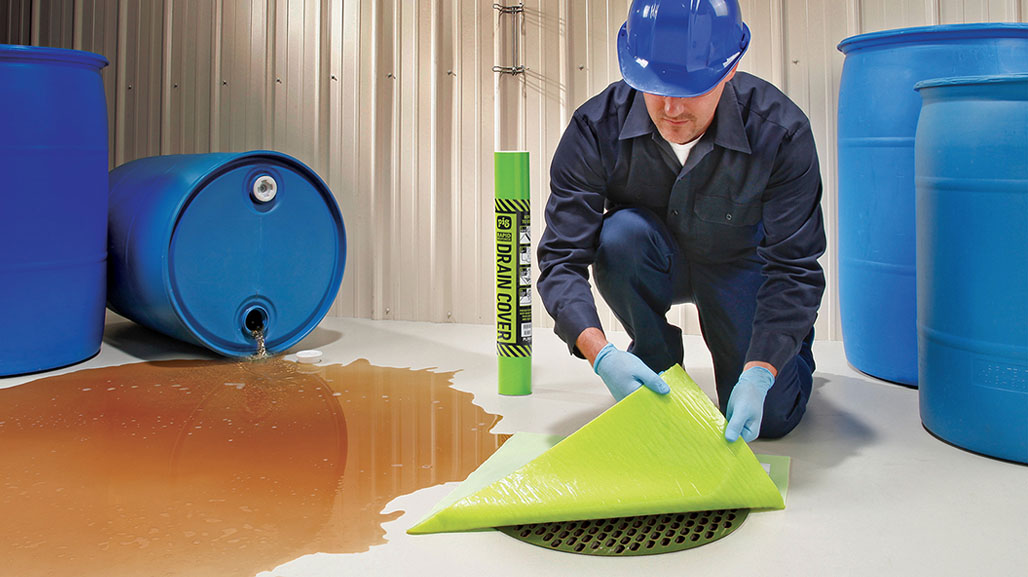Choosing The Right Respirator For Hurricane Cleanup Efforts
The dangers of a hurricane are one thing. But, the hazards do not end there. The cleanup process can present its own problems.
The dangers of a hurricane are one thing. But, the hazards do not end there. The cleanup process can present its own problems.
The dangers of a hurricane are one thing. But, the hazards do not end there. The cleanup process can present its own problems. One of those concerns is often how to protect workers who need to find the right respiratory safeguards to help them during cleanup efforts. The following is a Q & A to help you select the right type of respiratory protection.
The work after a hurricane includes rescue and recovery, demolition and remediation, and construction. Respiratory hazards may be, and often are, present during each of these phases. It is important to protect your health as you help others with cleanup.
In the demolition and remediation phase, workers may commonly be exposed to airborne dust, mold spores, asbestos fibers, hazardous chemicals, metal fume from torch cutting, etc. During construction, workers may commonly be involved in sanding, grinding, welding, painting, etc., which can also generate airborne contaminants.
High levels of contaminants can be found in floodwaters. In these instances, the best preventive measures are to ensure appropriate use of personal protective equipment and following of good hygiene practices, such as hand washing. Please visit the CDC for more information.
Odors from floodwaters and animal remains are unpleasant but are most likely not above occupational exposure limits (OEL). To help make the recovery worker’s job more bearable, a National Institute for Occupational Safety and Health (NIOSH) approved respirator with nuisance level organic vapor relief is recommended. If the OEL is exceeded, appropriate NIOSH certified organic vapor (OV) cartridges must be used. Moreover, none of 3M’s NIOSH approved N95, N100, R95, P95, or P100 disposable filtering facepiece respirators contain components made from natural rubber latex.
Respirators are designed to help reduce the wearer’s exposure to airborne contaminants. The primary purpose of a surgical facemask is to help prevent biological particles from being expelled by the wearer into the environment. Surgical masks are also designed to be fluid resistant to splash and splatter of blood and other infectious materials and not for reducing the wearer’s exposure to ambient airborne contaminants.
Surgical facemasks are not necessarily designed to seal tightly to the face, therefore the potential of air leakage around the edges exists. Even those surgical masks that appear similar to respirators have not been designed to protect the wearer from airborne hazards; hence, they should not be considered an equivalent substitute to government-approved respirators.
Some approved respirators are designed to have the characteristics of both an approved respirator and a surgical mask. In the U.S., these products are both approved by NIOSH and cleared by the U.S. Food and Drug Administration (FDA) for use in surgery.
The use of NIOSH-certified respirators in workplace environments must be accompanied by a full respiratory protection program as specified in the OSHA standard for respiratory protection: 29 CFR1910.134. Important components include written standard operating procedures, medical evaluation, user training, respirator cleaning and maintenance, and properly fitting the respirator to the user.
Those who only voluntarily use filtering facepiece respirators in the workplace are not required to comply with the entire standard. However, they must be given a copy of Appendix D (voluntary use). Please see http://www.osha.gov/ for more information.
If a wearer cannot achieve a good fit of the respirator to the face, contaminants may enter underneath the facepiece seal. The User Instructions contain proper procedures for putting on the respirator and checking for a good fit and seal. A good fit can only be obtained if the face is clean-shaven in the area where the respirator seals against the face. Beards, long mustaches and stubble may cause leaks into the respirator.
It is very important to read and follow the donning instructions carefully and to conduct a fit check or user seal check every time the respirator is put on. In workplace environments, wearers with tight-fitting respirators (including filtering facepieces) must be fit tested according to OSHA standard 29 CFR 1910.134. 3M recommends, but OSHA does not require, fit testing for those voluntarily wearing tight-fitting respirators.
Individuals with a compromised respiratory system, such as asthma or emphysema, or people with a history of heart disease should consult a physician before wearing a respirator. When respirators are worn in a workplace environment, OSHA requires that employees pass a medical evaluation prior to being fit tested or wearing a respirator. Employees who voluntarily wear a filtering facepiece respirator do not need to be medically evaluated. Please see OSHA standard 29 CFR 1910.134 for more information.
Reusable respirators must be cleaned as a matter of good hygiene and to help prevent facial irritation. Refer to the User Instructions included with the respirator and Appendix B-2 of the OSHA respirator standard (29 CFR 1910.134) for more information. Respirator wipes may be used as an interim cleaning method, but cannot be the sole method. Respirators that are shared between individuals must also be disinfected. Disposable filtering facepiece respirators may be preferred if there is a shortage of water suitable for cleaning elastomeric facepieces, as they are designed to be thrown away after they are finished being used. Please see packaging for time-use limitations.
Originally published on 3M.com.
For more information regarding 3M respirators, please visit their landing page on MSCDirect.com.
When it comes to fabricating, assembling or processing anything around the world, 3M knows efficiency is key. From ultra-strong abrasives that keep processes running smoothly, to futuristic materials that literally lighten your workload. 3M innovative solutions keep your business and your employees working smoothly with innovative industry leading solutions in abrasives, PPE and facilities safety solutions and adhesives and tapes.





